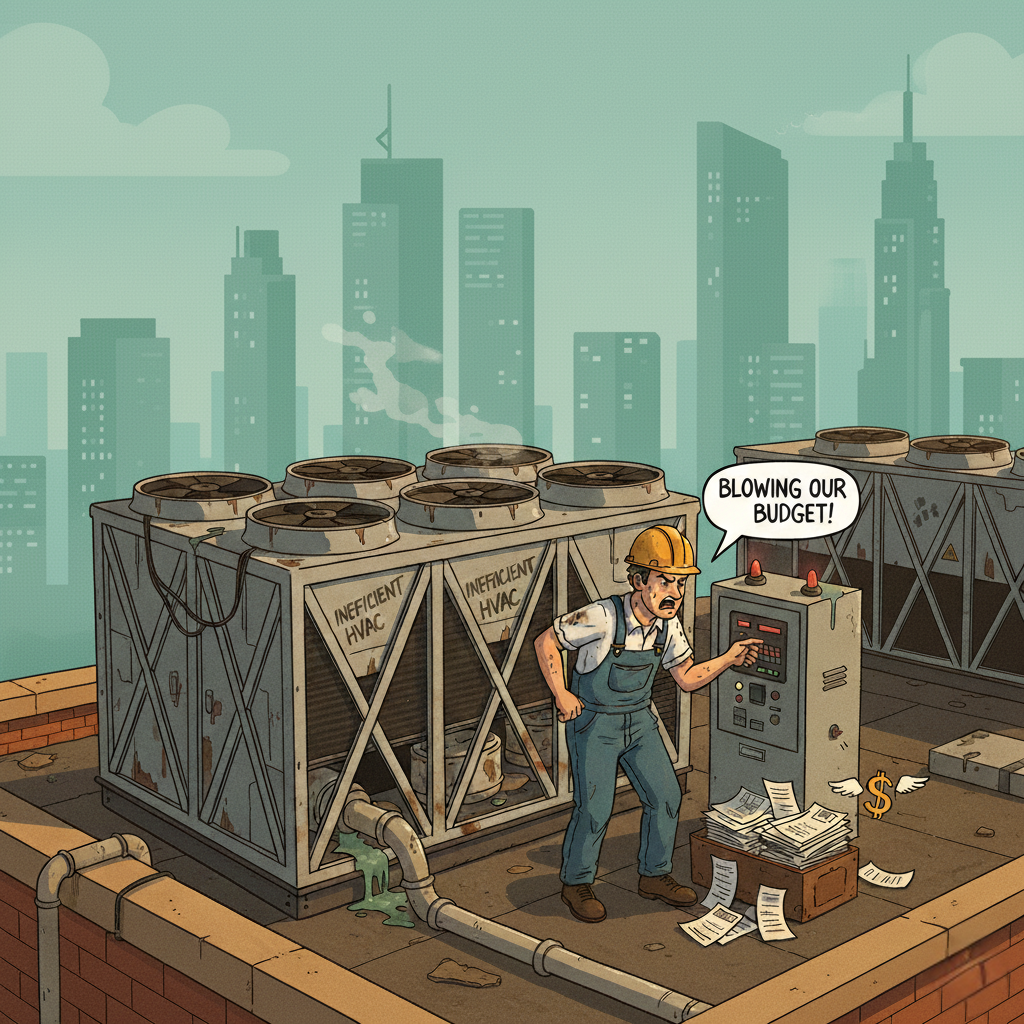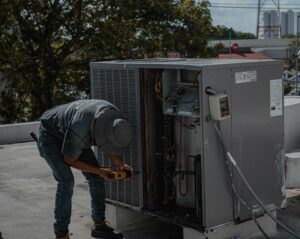
Emergency Repairs. Angry Tenants. Blown Budgets.
Inefficient HVAC systems are to blame.
When most building managers think about HVAC systems, utility costs come to mind first. And that’s for good reason.
According to the Department of Energy, energy used to heat and cool buildings accounts for roughly 35% of the total energy consumption. HVAC systems in particular make up roughly 40-60% of energy usage in these buildings. This typically makes up the largest proportion of energy consumption.
Energy waste is only one part of the story. Inefficient HVAC systems quietly rack up other costs – ones that are harder to see until they hit your budget in the form of expensive emergency repairs, shortened equipment lifespans, and unexpected capital expenditures.
This hidden cost burden makes inefficiency a double threat: it drains your operating budget today and undermines your long-term capital planning tomorrow.
Many buildings operate under the assumption that as long as HVAC systems are running, and residents or guests aren’t complaining, things are fine.
Behind the scenes, however, inefficiencies are sapping your system.
Inefficient HVAC systems cause excessive wear and tear on components. When equipment cycles too often, runs at improper settings, or works harder than necessary, its mechanical parts degrade faster. This leads to costly repairs and premature replacement of expensive equipment.
Think of a boiler operating at a higher-than-necessary setpoint for water temperature. This could be because of poorly tuned controls, or incorrect temperature settings. Regardless, the boiler is being overworked. Consequently, while its intended lifespan might be 20 years, it could need replacement after just 15.
That’s thousands of dollars in replacement costs arriving five years too soon.

Image Credit Pexels
Inefficient HVAC systems quietly degrade equipment, inflate maintenance budgets, and accelerate costly capital replacements. They show up as:
Inefficiency often shows up as recurring service calls: clogged filters, broken valves, failed compressors. These aren’t just annoyances. They add thousands annually to operating budgets.
Even minor inefficiencies compound: a pump pulling slightly more power each month can mask strain until it fails prematurely.
When systems are stressed, they’re more likely to fail unexpectedly. For multifamily buildings, that can mean residents without heat in January. For hotels, it can mean uncomfortable guests and poor reviews. Emergency service calls are expensive, disruptive to building staff juggling dozens of other tasks, and damage reputations.
Inefficient operations accelerate timelines for major equipment replacements. A boiler replacement that you expected in 2030 might hit in 2026, forcing unplanned capital outlays and budget reallocation.
For multifamily buildings, boards and property managers face resident pushback when maintenance fees rise unexpectedly to cover repairs or replacements. Protecting equipment lifespan is critical for financial stability.
For hotels, guest comfort is directly tied to HVAC performance. Equipment failures not only cost more to fix, but they also directly impact revenue through lost bookings, refunds, and negative reviews.
Parity’s Optimizer service controls and optimizes HVAC systems in real time, ensuring that equipment runs efficiently by:
The result: Buildings see savings on utility costs and longer-term reductions in maintenance and replacement costs.
In April 2024, when 75 Wall Street suffered a power outage at night, Parity assisted with automatically restarting equipment, easing the resident manager’s stress and avoiding complaints from occupants.
To learn more about how HVAC optimization can help curb unnecessary HVAC-related costs and improve equipment performance, contact contact@paritygo.com or call 1-833-372-7489.